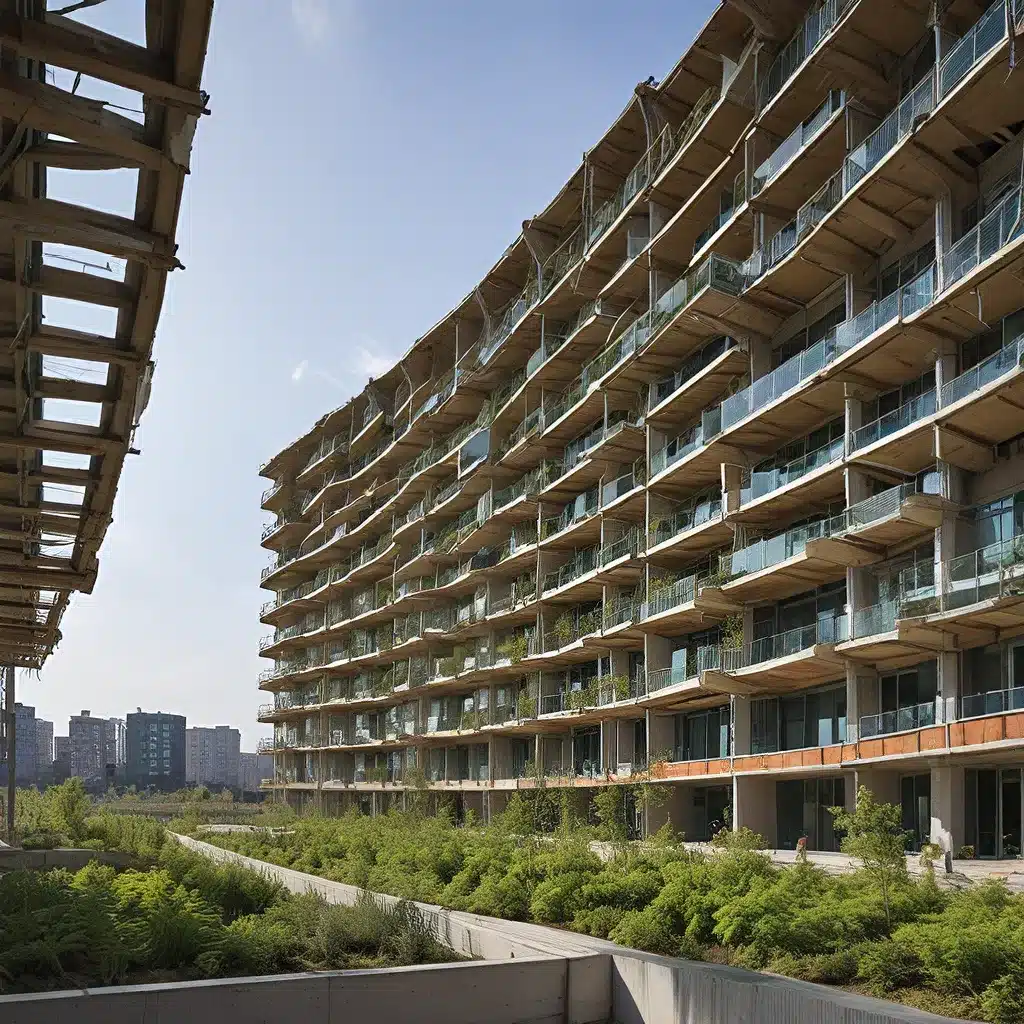
Ah, the age-old dilemma – how do we build a future that’s both functional and kind to the planet? As a general contractor, I’ve wrestled with this question more times than I can count. But fear not, my friends, for I’ve uncovered the secrets to mastering green building principles, and I’m here to share them with you.
The Sustainable Shift
Picture this: you’re standing in the middle of a construction site, the air thick with the scent of freshly sawed wood and the echoes of power tools. But wait, there’s something different. The materials being used aren’t your run-of-the-mill options, and the energy-efficient systems being installed are more akin to something out of a sci-fi movie. Welcome to the world of sustainable construction, where the lines between progress and preservation have been beautifully blurred.
As general contractors and builders, we have a crucial role to play in shaping a more sustainable future. The urgency to address climate change and the pressing need for ecological conservation have sparked a profound shift in the construction and architectural industries. This transition is not just a passing trend, but a fundamental rethinking of how we design, build, and operate our built environments.
The Principles of Sustainable Design
At the heart of this shift lies the principles of sustainable design. These guiding principles aim to minimize the environmental impact of construction while enhancing efficiency and long-term sustainability. It’s a holistic approach that considers the entire life cycle of a building, from its inception to its eventual decommissioning.
One of the cornerstones of sustainable design is energy efficiency. By integrating renewable energy sources like solar, wind, and geothermal, we can significantly reduce the carbon footprint of our buildings. Water conservation is another key focus, with innovative rainwater harvesting systems and greywater reuse becoming increasingly common.
But it’s not just about the technical aspects – sustainable design also emphasizes the careful selection of building materials. We’re talking about renewable, recyclable, and low-impact options that have a reduced environmental footprint. Think fast-growing bamboo, recycled steel, and reclaimed wood – materials that preserve our natural resources and add unique character to the finished project.
The Benefits of Going Green
The transition to sustainable construction isn’t just about being environmentally responsible; it’s also a smart business decision. Green buildings typically incur lower energy costs, reduced water bills, and diminished maintenance expenses, leading to significant long-term savings. And as the demand for sustainable building materials continues to grow, their costs have been steadily decreasing, making green construction more accessible and affordable.
But the benefits extend far beyond the bottom line. By prioritizing aspects like indoor air quality and natural lighting, green buildings can dramatically enhance the well-being of their occupants. Advanced ventilation systems and the use of non-toxic, low-emitting materials ensure a healthier indoor environment, which can have a profound impact on the health and productivity of those who live and work within.
Building a Culture of Sustainability
Achieving mastery in green construction isn’t just about implementing the right techniques; it’s about cultivating a culture of sustainability within the industry. This requires a commitment to ongoing learning, innovation, and the adaptation of best practices.
Building a culture of green building involves creating an organizational mindset and practices that prioritize environmental sustainability, energy efficiency, and eco-friendly construction techniques. This includes educating employees and stakeholders, conducting awareness campaigns, and embedding sustainable principles into every facet of the construction process.
As we continue to strive for a more sustainable future, it’s important to remember that the journey is not without its challenges. But with a steadfast commitment to green building principles and a willingness to embrace innovation, we can pave the way for a built environment that coexists in harmony with the natural world.
The Green Building Movement
The green building movement is no longer a niche trend; it’s a global revolution that’s transforming the construction industry. From training and education initiatives to awareness campaigns, the industry is actively working to promote the principles of sustainable construction. And the results speak for themselves – green buildings are not only more environmentally friendly but also more economically viable and socially responsible.
As we look to the future, the role of general contractors and builders in this movement cannot be overstated. We are the gatekeepers of change, the visionaries who can transform the way we design, build, and operate our built environments. By embracing green building principles and fostering a culture of sustainability, we can be the driving force behind a more resilient and prosperous future.
So, my fellow construction enthusiasts, let’s roll up our sleeves and get to work. The path to a sustainable future may not be an easy one, but with a bit of creativity, a whole lot of determination, and a deep respect for our planet, I’m confident that we can create something truly remarkable.
Related posts:
No related posts.




